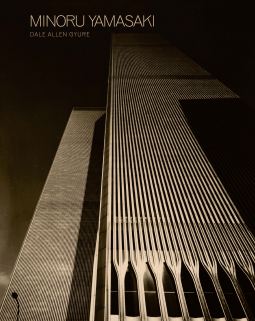Please wait... This may take a moment.
Minoru Yamasaki
Humanist Architecture for a Modernist World
This title was previously available on NetGalley and is now archived.
Pub Date
Nov 28 2017
| Archive Date
Dec 20 2017
Description
The first book to reevaluate the evocative and polarizing work of one of midcentury America’s most significant architects
Born to Japanese immigrant parents in Seattle, Minoru Yamasaki (1912–1986) became one of the towering figures of midcentury architecture, even appearing on the cover of Time magazine in 1963. His self-proclaimed humanist designs merged the modern materials and functional considerations of postwar American architecture with traditional elements such as arches and colonnades. Yamasaki’s celebrated and iconic projects of the 1950s and ’60s, including the Lambert–St. Louis Airport and the U.S. Science Pavilion in Seattle, garnered popular acclaim.
Despite this initial success, Yamasaki’s reputation began to decline in the 1970s with the mixed critical reception of the World Trade Center in New York, one of the most publicized projects in the world at the time, and the spectacular failure of St. Louis’s Pruitt-Igoe Apartments, which came to symbolize the flaws of midcentury urban renewal policy. And as architecture moved in a more critical direction influenced by postmodern theory, Yamasaki seemed increasingly old-fashioned. In the first book to examine Yamasaki’s life and career, Dale Allen Gyure draws on a wealth of previously unpublished archival material, and nearly 200 images, to contextualize his work against the framework of midcentury modernism and explore his initial successes, his personal struggles—including with racism—and the tension his work ultimately found in the divide between popular and critical taste.
The first book to reevaluate the evocative and polarizing work of one of midcentury America’s most significant architects Born to Japanese immigrant parents in Seattle, Minoru Yamasaki (1912–1986)...
Description
The first book to reevaluate the evocative and polarizing work of one of midcentury America’s most significant architects
Born to Japanese immigrant parents in Seattle, Minoru Yamasaki (1912–1986) became one of the towering figures of midcentury architecture, even appearing on the cover of Time magazine in 1963. His self-proclaimed humanist designs merged the modern materials and functional considerations of postwar American architecture with traditional elements such as arches and colonnades. Yamasaki’s celebrated and iconic projects of the 1950s and ’60s, including the Lambert–St. Louis Airport and the U.S. Science Pavilion in Seattle, garnered popular acclaim.
Despite this initial success, Yamasaki’s reputation began to decline in the 1970s with the mixed critical reception of the World Trade Center in New York, one of the most publicized projects in the world at the time, and the spectacular failure of St. Louis’s Pruitt-Igoe Apartments, which came to symbolize the flaws of midcentury urban renewal policy. And as architecture moved in a more critical direction influenced by postmodern theory, Yamasaki seemed increasingly old-fashioned. In the first book to examine Yamasaki’s life and career, Dale Allen Gyure draws on a wealth of previously unpublished archival material, and nearly 200 images, to contextualize his work against the framework of midcentury modernism and explore his initial successes, his personal struggles—including with racism—and the tension his work ultimately found in the divide between popular and critical taste.
Advance Praise
“Gyure does his subject justice. His adept presentation allows us to think anew about Yamasaki’s legacy. Gyure provides a wealth of insight on the architect’s values and his approach to design, and he reveals the complex, conflicted nature of his career.”—Richard Longstreth, George Washington University
“Minoru Yamasaki was one of the brightest lights in the extraordinary galaxy of mid-20th century architectural talent. We have waited a long time for an adequate re-appraisal of his work, but this meticulously researched and judiciously rendered account will firmly re-establish his reputation.”—Robert Bruegmann, University of Illinois at Chicago
“Gyure does his subject justice. His adept presentation allows us to think anew about Yamasaki’s legacy. Gyure provides a wealth of insight on the architect’s values and his approach to design, and...
Advance Praise
“Gyure does his subject justice. His adept presentation allows us to think anew about Yamasaki’s legacy. Gyure provides a wealth of insight on the architect’s values and his approach to design, and he reveals the complex, conflicted nature of his career.”—Richard Longstreth, George Washington University
“Minoru Yamasaki was one of the brightest lights in the extraordinary galaxy of mid-20th century architectural talent. We have waited a long time for an adequate re-appraisal of his work, but this meticulously researched and judiciously rendered account will firmly re-establish his reputation.”—Robert Bruegmann, University of Illinois at Chicago
Available Editions
| EDITION |
Other Format |
| ISBN |
9780300217094 |
| PRICE |
$65.00 (USD)
|
| PAGES |
296
|
Additional Information
Available Editions
| EDITION |
Other Format |
| ISBN |
9780300217094 |
| PRICE |
$65.00 (USD)
|
| PAGES |
296
|
Average rating from 2 members




